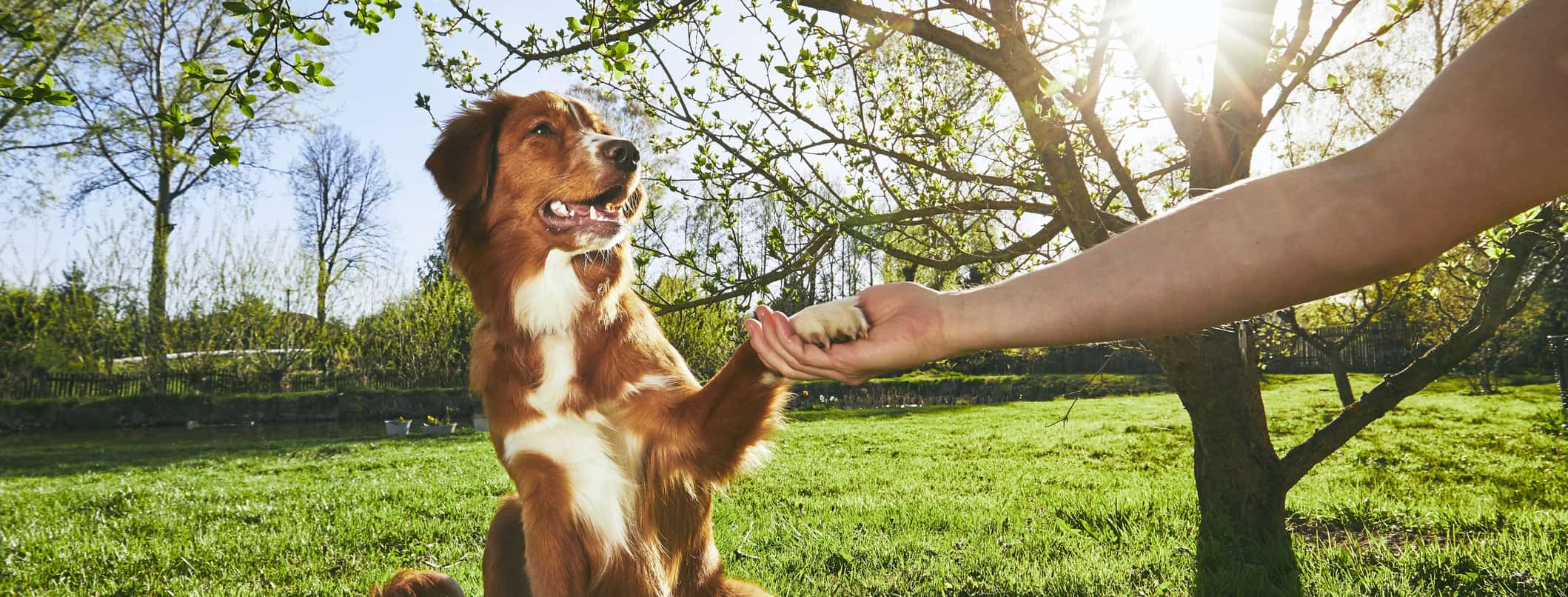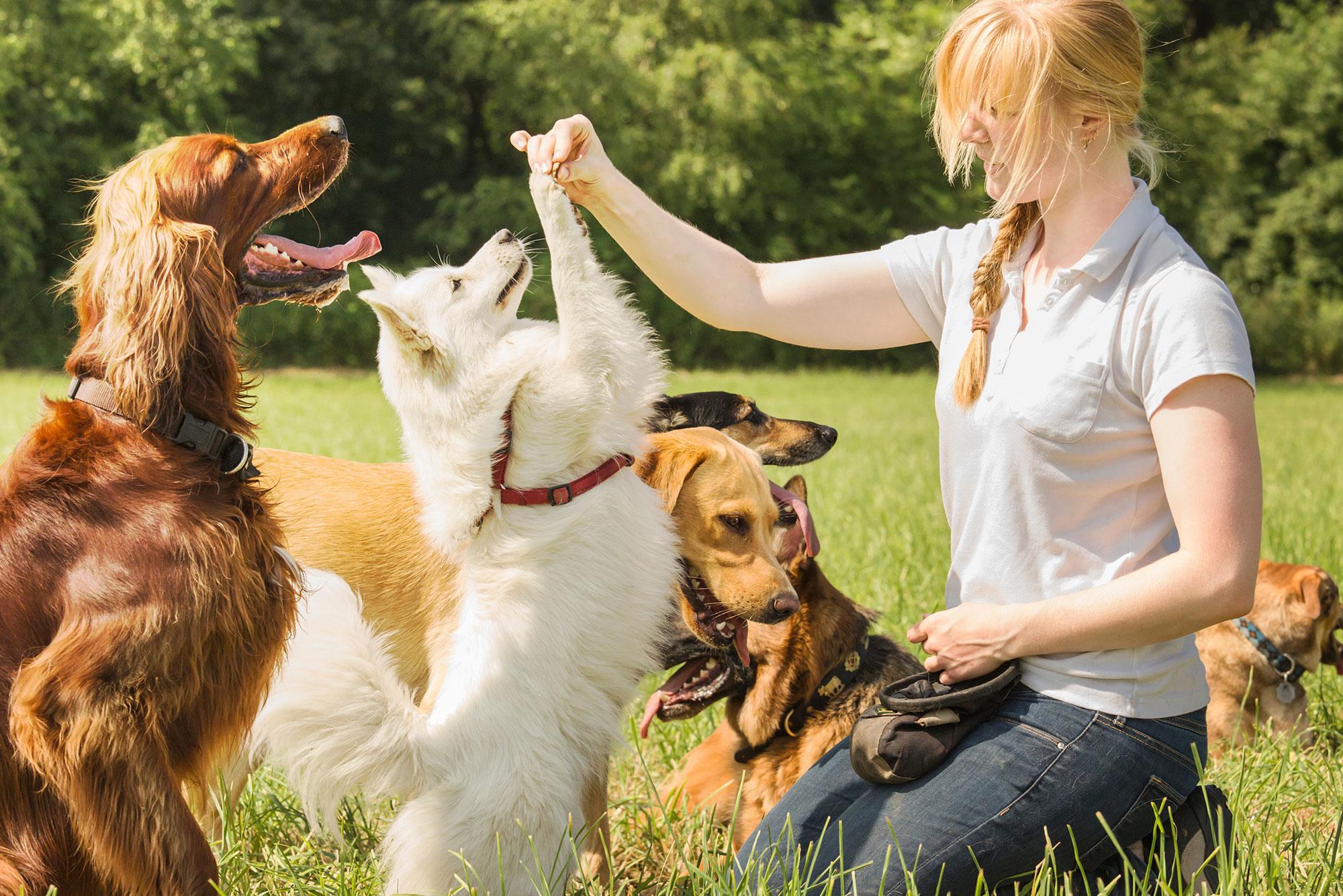Comprehending Dog Body Movement During Dog Training
Comprehending Dog Body Movement During Dog Training
Blog Article
Important Tips for Successful Dog Training: A Guide for Pet Dog Owners
Effective pet dog training is a multifaceted process that calls for a tactical strategy customized to both the pet's personality and the proprietor's goals. Understanding how to navigate these obstacles can considerably boost the training experience, ultimately transforming the connection between owner and canine.
Understanding Dog Behavior
Understanding dog actions is important for effective training and fostering an unified relationship between dogs and their owners. Dogs connect mainly via body movement, vocalizations, and activities, making it critical for owners to translate these signals properly. Recognizing a pet's stance, tail position, and ear positioning can supply understandings right into its psychological state. A wagging tail does not always show happiness; it can additionally signal enjoyment or anxiousness.

Socializing plays a considerable role in pet habits; direct exposure to different environments, individuals, and various other animals can significantly influence a pet's temperament. Moreover, factors such as type qualities and individual temperament should direct training techniques, as some breeds may have certain behavioral qualities that require tailored approaches. By recognizing these aspects, proprietors can produce an encouraging environment that motivates favorable behavior, resulting in effective training outcomes and a much deeper bond with their pet dogs.
Developing Constant Commands
Reliable communication with your pet starts with establishing regular commands. This foundational component of training is important for cultivating understanding between you and your animal. Consistency in the commands you make use of ensures that your pet can reliably connect particular words or phrases with the desired habits.
When choosing commands, pick clear, unique words that are very easy to claim and differentiate from one an additional. Prevent utilizing similar-sounding commands that might confuse your dog. Making use of "rest" and "stay" is proper, however "rest" and "struck" can lead to misunderstandings.
Additionally, keep the very same tone and volume for every command. Canines are sensitive to singing signs, so varying your tone can create complication.
It is similarly essential to make certain that all relative get on the very same page regarding the commands made use of. A united front in command usage will prevent mixed signals and strengthen the knowing procedure.
Favorable Reinforcement Techniques
The power of positive reinforcement in pet training hinges on its ability to motivate desired behaviors with incentives and appreciation. This technique is based in the concept that actions followed by beneficial outcomes are more probable to be repeated. By incorporating positive reinforcement right into your training program, you can effectively form your pet dog's actions in a useful manner.
To apply positive support, it's vital to recognize what encourages your pet dog, whether it be deals with, toys, or spoken appreciation. When your click for more canine executes a desired action, such as remaining on command, immediately reward them with a reward or affection. This organization in between the command and the positive end result reinforces their understanding.
It's critical to timing the incentives correctly; providing the support within seconds of the wanted actions helps your pet dog make the connection (dog training). Additionally, consistency is key-- make certain that all relative use the same commands and incentive systems to stay clear of confusion

Gradually, you can reduce the regularity of treats as your dog learns the actions, transitioning to commend or recurring incentives. This approach not only fosters a solid bond in between you and your canine however also advertises a favorable understanding setting, making educating a satisfying experience for both.
Socialization and Communication
Constantly exposing your canine to a range of environments, individuals, and other animals is crucial for their social advancement. Socialization needs to start early, ideally throughout the critical window of 3 to 14 weeks, when pups are most receptive to brand-new experiences. Nevertheless, older dogs can also take advantage of ongoing socialization initiatives.
Present your pet to different setups, such as parks, pet-friendly stores, and metropolitan locations. This direct exposure assists them adjust to numerous stimulations, lowering anxiousness and anxiety reactions. Encourage positive interactions with other pets and individuals, making sure that these experiences are safe and controlled to promote self-confidence.
Utilize structured playdates with genteel pets, as this can improve your pet dog's social abilities and educate them suitable actions. Obedience classes and training sessions additionally give exceptional chances for socializing, enabling your canine to communicate with others in my sources a supervised environment.
Monitor your dog's body language during communications, as this will certainly help you assess their comfort level. Slowly boost direct exposure to more tough situations while guaranteeing that each experience is favorable. A well-socialized pet dog is extra likely to show well balanced habits, making them a happiness to have in any type of setup.
Dealing With Usual Training Challenges
Every pet dog owner will come across training obstacles at some time, no matter their pet's age or socialization degree. Identifying common problems such as stubbornness, disturbances, and fearfulness can help in developing effective approaches for improvement.

Disturbances throughout training sessions can hinder emphasis. To battle this, start training in a silent setting with minimal stimuli. Gradually present interruptions as the canine ends up being much more skillful in commands. Short, frequent training sessions are additionally effective in maintaining focus.
Terror can prevent a pet's discovering process. Gradual desensitization to the resource of worry, coupled with positive support, can assist ease anxiety. Patience is crucial; never compel a pet dog into a situation that creates distress, as this might aggravate the problem.
Inevitably, understanding and resolving these common obstacles with an organized strategy will cultivate a much more efficient training experience, reinforcing the bond between dog and proprietor while advertising efficient discovering.
Verdict
In recap, effective pet dog training counts on a thorough understanding of canine habits, the facility of consistent commands, and the application of favorable support techniques. Socializing plays an essential go to my site role in developing well-adjusted pets, while addressing common training challenges needs persistence and versatility. By implementing these vital strategies, animal proprietors can cultivate a strong bond with their canines and advertise desirable behaviors, eventually resulting in an unified relationship between humans and their canine friends.
Understanding dog behavior is necessary for effective training and cultivating a harmonious relationship between dogs and their proprietors.Socializing plays a significant function in pet dog habits; direct exposure to numerous atmospheres, individuals, and other animals can dramatically impact a canine's temperament.The power of favorable support in pet dog training lies in its ability to urge preferred actions with incentives and appreciation. By incorporating favorable reinforcement right into your training routine, you can effectively shape your pet's actions in a useful fashion.
In summary, successful pet training relies on a comprehensive understanding of canine behavior, the facility of consistent commands, and the application of positive support strategies.
Report this page